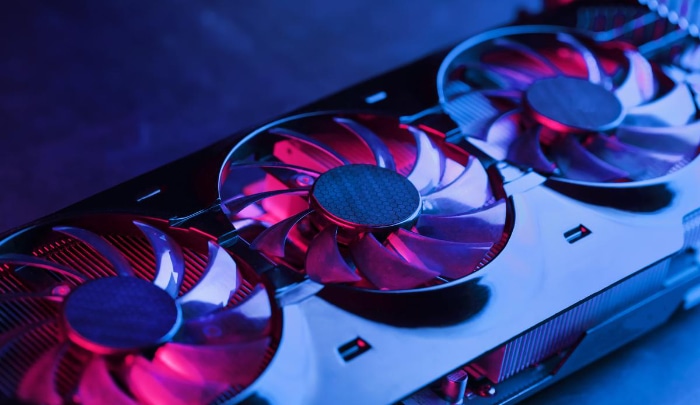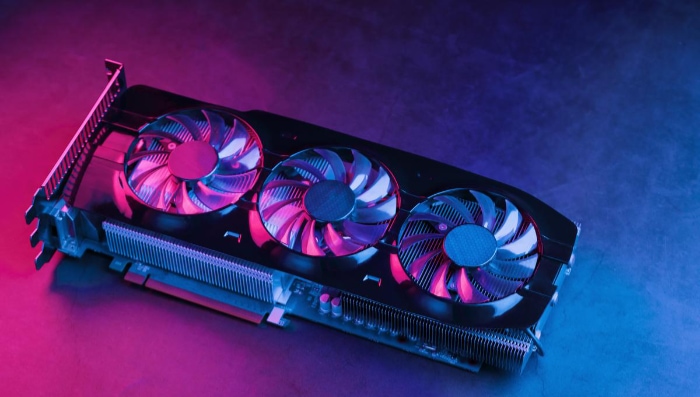No Display from Your Graphics Card? Here's What to Do

Graphics cards, the powerhouse of image processing in a computer, play an indispensable role in providing high-quality visuals for gaming, video editing, 3D rendering, and even everyday tasks like web browsing or streaming videos. Ensuring their optimal performance is crucial for any user aiming to extract maximum potential from their system.
But what happens when this essential component starts acting up, more specifically, when it stops displaying anything at all?
This issue, though alarming, is not uncommon among computer users and can have various causes. It can result in severe disruption of your computing activities, especially if your work or passion involves visually intensive tasks.
Understanding why this happens and how to troubleshoot it is a fundamental skill that can save both time and money.
Understanding the Problem
Graphics cards serve as the bridge between your computer system and the monitor, translating data into comprehensible images. If this bridge encounters a glitch, the result is often a blank or non-functional display.
Let's dive deeper into this issue to grasp the breadth and depth of the problem.
The Issue Explained
A graphics card not displaying anything can be quite an alarming issue. It means that no matter how well your computer is functioning, you'll not be able to see anything on your monitor. This makes it impossible to use your computer effectively.
In extreme cases, even the basic sign of life – the BIOS or startup splash screen – fails to appear when you boot up your system.
Common Symptoms
Several signs indicate a problem with your graphics card. You may notice these symptoms before the issue escalates to a complete loss of display:
- Frequent screen glitches or distortion in images
- Computer crashes when running graphics-intensive programs
- Unusual pixelated patterns or lines on the screen
- Intermittent screen blackouts before the complete loss of display
Impact on Computer Functionality
The issue at hand can have far-reaching impacts on your overall computer functionality. Since the monitor is your primary interface with the computer, the lack of display can render the system unusable.
If you're a gamer, designer, or someone whose work involves extensive visual interactions, this problem can be even more devastating. You might not be able to perform basic tasks, let alone complex graphical operations.
Potential Causes
The issue of a graphics card not displaying anything can be attributed to a variety of factors. It's essential to identify the root cause to apply the correct troubleshooting solution.
Here, we explore potential triggers behind this issue, ranging from hardware malfunctions to driver problems.
Faulty Hardware
Graphics Card Failures
A faulty graphics card could be the primary cause behind the absence of display. This could be due to natural wear and tear, poor handling, manufacturing defects, or overheating due to inadequate cooling.
Monitor Problems
Sometimes, the problem might not be with the graphics card but the monitor itself. Monitors can also fail due to several reasons, including age, power surges, or internal component failures.
Issues with Cables or Connectors
Faulty cables or loose connections can also cause display problems. A damaged HDMI, DisplayPort, DVI, or VGA cable, depending on what you use, could result in no display. Similarly, a loose connection can interrupt the signal between the graphics card and monitor.
Driver Issues
Outdated Drivers
Graphics cards require up-to-date drivers to function correctly. If your graphics card drivers are outdated, they might not be compatible with your operating system's latest updates, causing display issues.
Incorrectly Installed Drivers
An incorrectly installed driver can cause more harm than good. It might not interface correctly with the graphics card, leading to a complete loss of display.
BIOS/UEFI Settings
Graphics Settings
Incorrect settings in your system's BIOS/UEFI could cause display problems. If the onboard graphics are set as the primary display source instead of the dedicated graphics card, it could result in a blank screen.
Power Settings
Improper power management settings in the BIOS/UEFI can also affect the graphics card's functionality, leading to a loss of display.
Operating System and Software Problems
Incompatibility Issues
Sometimes, the operating system or a specific software might not be compatible with the graphics card, causing display issues. This is especially common with older graphics cards running on new operating systems or software.
System Bugs or Glitches
Bugs or glitches in the operating system could also cause the graphics card to malfunction. These bugs could be random or triggered by specific system events.
Troubleshooting Steps
Once you've understood the potential causes, it's time to get hands-on with the solutions. This section will guide you through various troubleshooting steps that can help you restore the display from your graphics card.
Hardware Checks

Checking the Graphics Card
If you're comfortable opening your computer, remove the graphics card and inspect it for any obvious signs of damage. If possible, test it in another system to determine if the problem is indeed with the card.
Inspecting Cables and Connectors
Examine all the cables and connectors involved in transmitting the signal from your graphics card to your monitor. Ensure that they are not damaged and are securely connected at both ends.
Testing with Another Monitor
To rule out the possibility of a faulty monitor, try connecting your computer to a different monitor if one is available. If the second monitor works fine, then the problem likely lies with your original monitor.
Driver Updates
How to Update Graphics Drivers
If the problem lies with outdated or faulty drivers, the solution might be to update them. Visit the graphics card manufacturer's website to download and install the latest drivers.
Safe Mode Driver Installation
If you're unable to boot into your operating system, try booting in safe mode. This mode allows essential system processes and disables most others, giving you a chance to uninstall the old drivers and install the new ones.
BIOS/UEFI Tweaks
Changing Graphics and Power Settings
Enter your system's BIOS/UEFI and navigate to the graphics settings. Ensure the primary display is set to your dedicated graphics card if you have one.
Also, check the power management settings to ensure they're not inhibiting your graphics card's functionality.
Updating the BIOS/UEFI
In some cases, updating your system's BIOS/UEFI could solve the problem. This process varies with different motherboard manufacturers, so refer to your motherboard manual or manufacturer's website for specific instructions.
Operating System and Software Solutions
System Updates
Ensure your operating system is up-to-date as new updates often bring bug fixes that might resolve your issue.
Reinstalling the OS
If all else fails, and you suspect the problem lies with the operating system, you might need to reinstall the OS. Remember to backup your data before proceeding as this step will erase all your files.
Compatibility Mode and Legacy Support
If your graphics card is older and not supported by new software or operating system, running the software in compatibility mode or enabling legacy support in the system settings might help.
Each problem with a graphics card not displaying anything is unique, so one solution might not work for everyone. However, these troubleshooting steps should cover the vast majority of scenarios and get your graphics card back up and running.
Preventing Future Issues
Prevention is better than cure, and this old adage certainly applies to technical issues as well. The best approach to handle graphics card display problems is to prevent them from occurring in the first place.
Here are some preventive measures you can take to avoid future graphics card display issues.
Regular Maintenance and Updates
System Updates
Ensure that your system, including the operating system and all drivers, are kept up-to-date. These updates often include bug fixes, enhancements, and support for newer technologies, which can prevent potential issues.
Physical Cleaning
Accumulated dust can cause overheating, which might lead to hardware failure. Regularly cleaning your computer, especially the graphics card and its fan, can prevent such issues.
Tips for Proper Handling and Usage of Graphics Cards
Safe Handling
Always handle the graphics card and other components with care. Avoid touching the circuitry, and ensure you're grounded to prevent electrostatic discharge when handling these components.
Proper Installation
Ensure that the graphics card is properly seated in its slot and the power connectors are properly attached. A loosely connected card can cause display issues.
Adequate Power Supply
Graphics cards require a significant amount of power to operate. Using a power supply unit (PSU) that can deliver the required power can prevent potential issues.
The Importance of Adequate Cooling and Ventilation
Cooling Systems
Ensure your computer has adequate cooling, especially if you're into gaming or other graphics-intensive work. An overheated graphics card can cause many problems, including loss of display.
Ventilation
Ensure your computer case has enough ventilation. A good airflow can help keep the components, including the graphics card, cool and functioning at their best.
Conclusion
Having dived deep into the issue of a graphics card not displaying anything, we can appreciate the multifaceted nature of this problem. It's clear that the causes can range widely, from simple hardware connectivity issues to more complex software incompatibilities and system settings.
The troubleshooting steps discussed provide a comprehensive approach to diagnosing and rectifying this issue. However, it's worth remembering that these are broad guidelines, and the solution may vary depending on the specific nature of your problem.
Therefore, patience and a systematic approach are key to resolving this issue.
Moreover, adopting the preventive measures discussed can not only help mitigate such problems but also enhance the overall longevity and performance of your computer system. Regular updates, physical maintenance, and mindful handling are small steps that can have a significant impact on the system's health.
In the dynamic realm of technology, issues like a graphics card not displaying anything can be daunting. Yet, with the right knowledge and approach, they can be effectively managed, ensuring that your digital experience remains seamless and enjoyable.
Remember, if the problem persists even after trying all these steps, it might be best to consult a professional. After all, understanding our limits is also a part of effective problem-solving.


